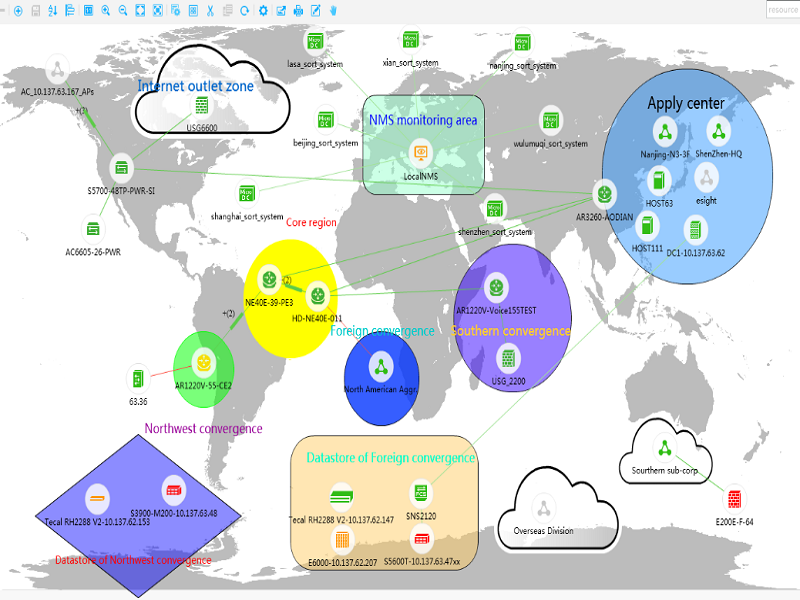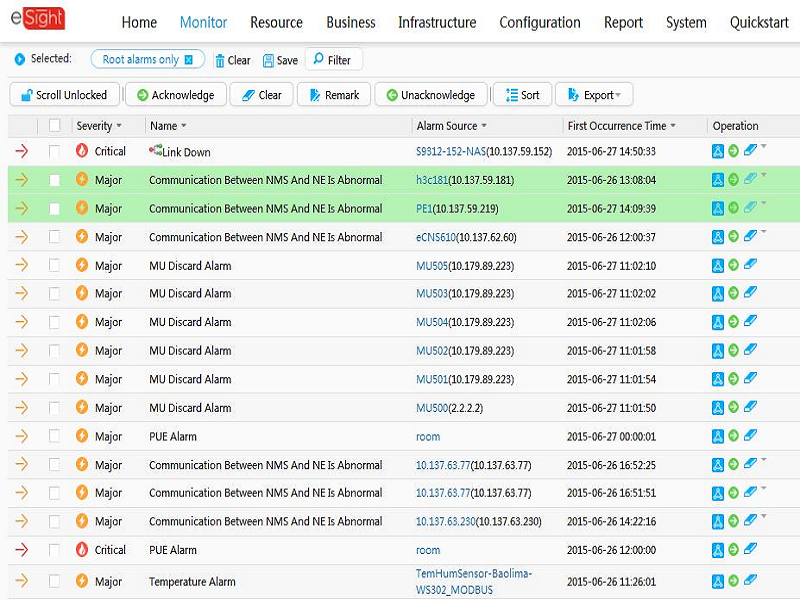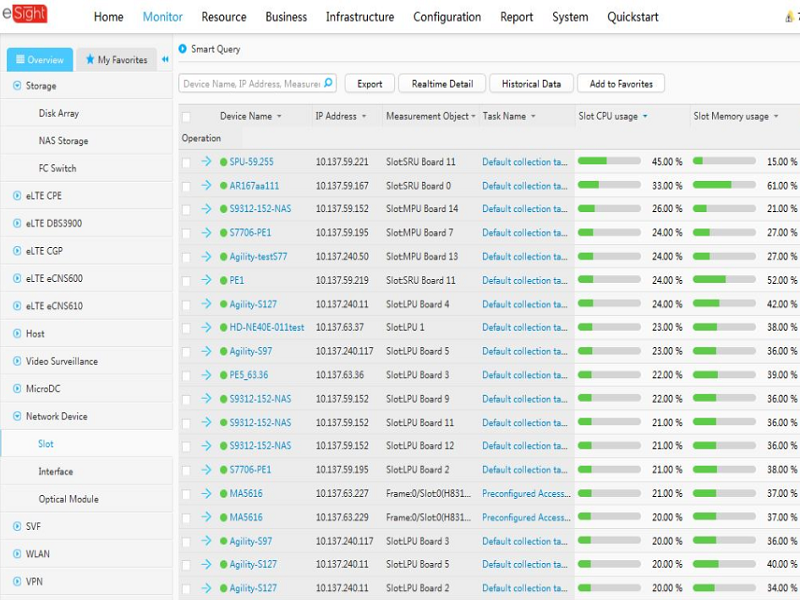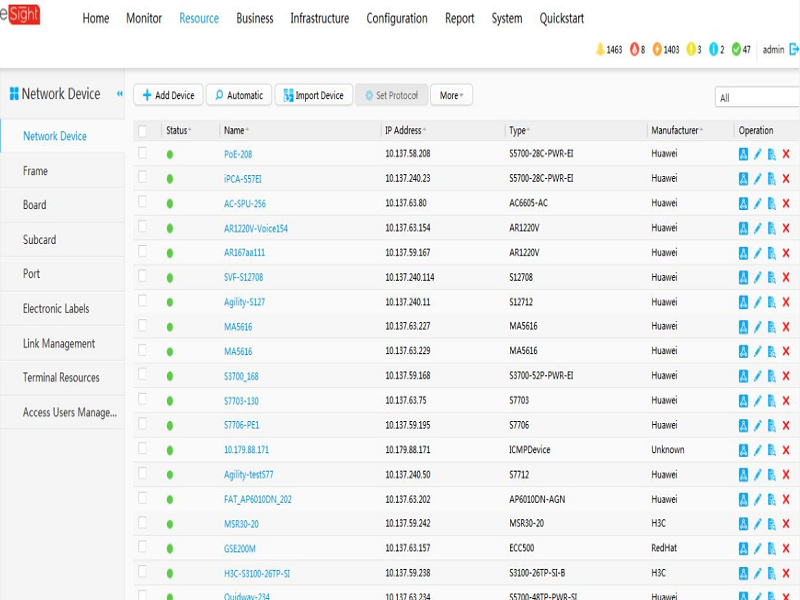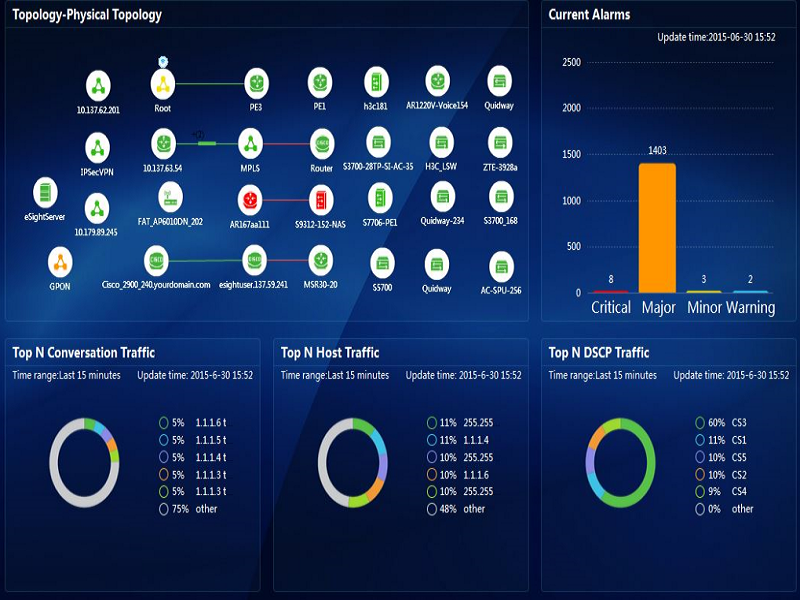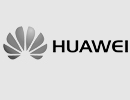| Modular architecture |
- Modular design enables eSight deployment by types of devices or services to be managed, for quick and easy implementation
- Scalable software platform supports all eSight components, features, and functionality, allowing components needed for new devices and services to be added seamlessly
|
| Comprehensive performance monitoring |
- Collects statistics on interface and link traffic in real time, providing constant analysis of network performance
- Monitors and records CPU and memory utilization statistics, with dynamic alarms to identify functional and performance faults for quick resolution
|
| Centralized alarms |
- Provides visual displays of all devices in the network for administrators to view alarm settings at a glance
- Masks, consolidates, suppresses, and clears repeated or invalid alarms to simplify maintenance
- Configure alarms as voice, email, SMS, or panel displays to alert administrators to view fault information anytime, anywhere
- Performance threshold alarms monitor exceptions to key performance indicators in real time
|
| Customizable management portal/homepage |
- Provides flexibility to define top-level interface screens to display network status, performance indicators, and changes occurring at key devices, giving administrators a customized overview of the network in real time
- Customizing the large-screen display gives administrators the most useful view of network-wide topology, device status, and key indicators
|
| Comprehensible, customizable reporting |
- Supports broad range of reporting models and formats
- Includes standard reporting templates for presenting data in useful tables, graphs, and charts
- Provides simple, drag-and-drop UI for creating custom reports based on specific needs and requirements for optimizing ICT infrastructure management, operations, and maintenance
|
| System logs |
- Maintains comprehensive logs of actions performed by device and user for help in diagnosing faults
- Records network security operations and run logs, helping detect potential security risks in a timely manner
|
| Easy, efficient deployment |
- Distributed deployment mode is cost-efficient and easily manageable
- Supports 2-node cluster deployment and 1+1 redundancy provisioning to ensure uninterrupted service, 24 x 7
- Flexible deployment process supports hierarchical, collaborative management with centralized monitoring
|
| Flexible permissions and access rights |
- User-based permissions grant management rights to different users and user groups
- Domain-based rights for administrators in different domains to manage specified devices
- Time-based rights giving access permissions to accounts during specified time segments
|
| SDK with open APIs |
- Modular design and management features implemented through SNMP/FTP/HTTP interfaces provide visibility of all devices throughout complex, converged ICT networks
- Supports management of standards-based IT products from other vendors
- Comprehensive APIs and 3rd-party plug-ins for developing custom services and applications; based on open standards — SNMP, FTP, HTTP/HTTPS, OSGi
|

